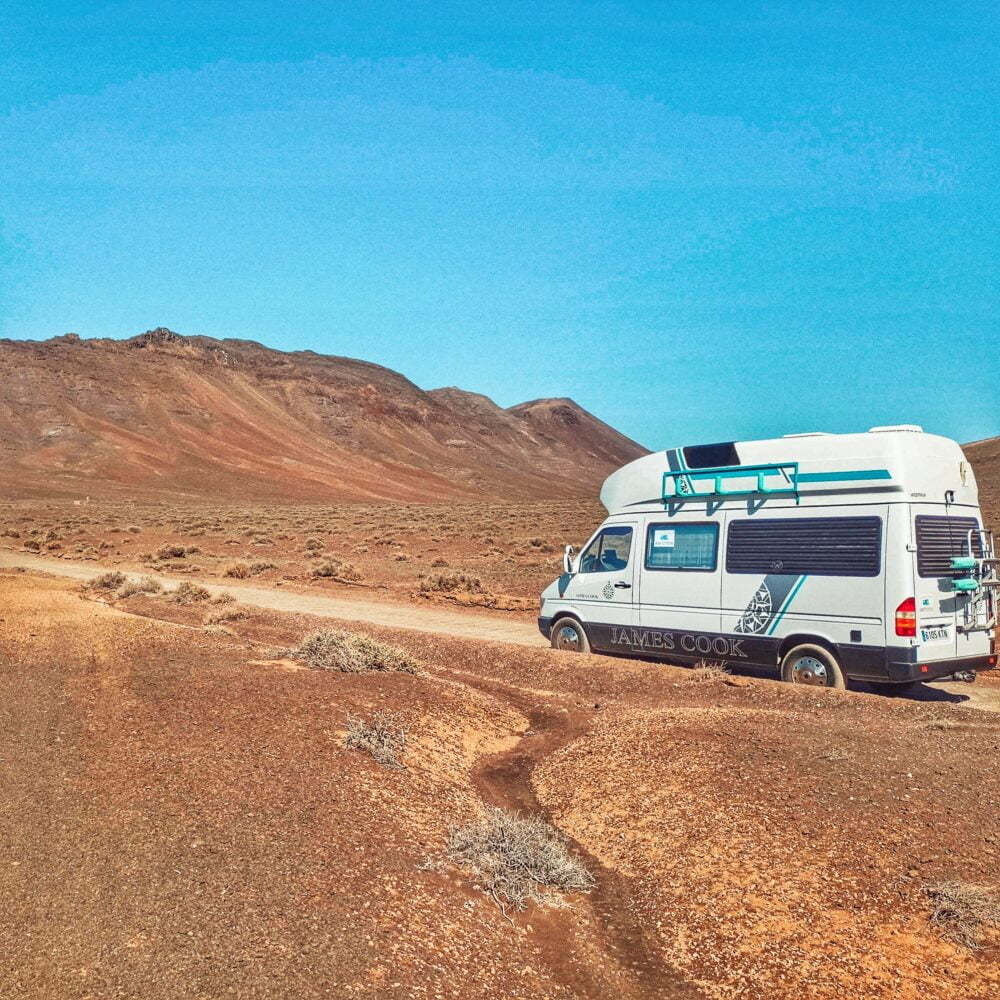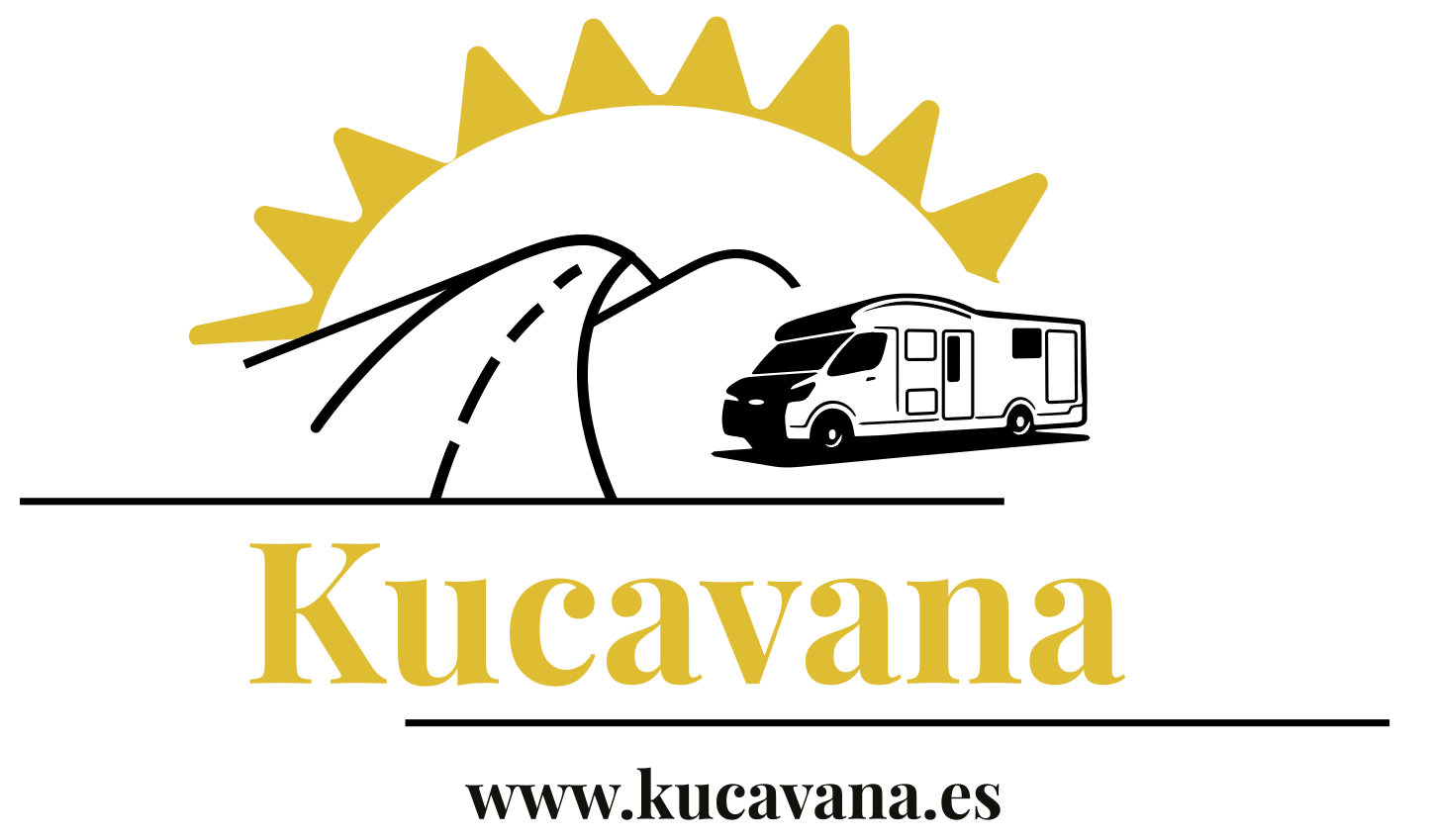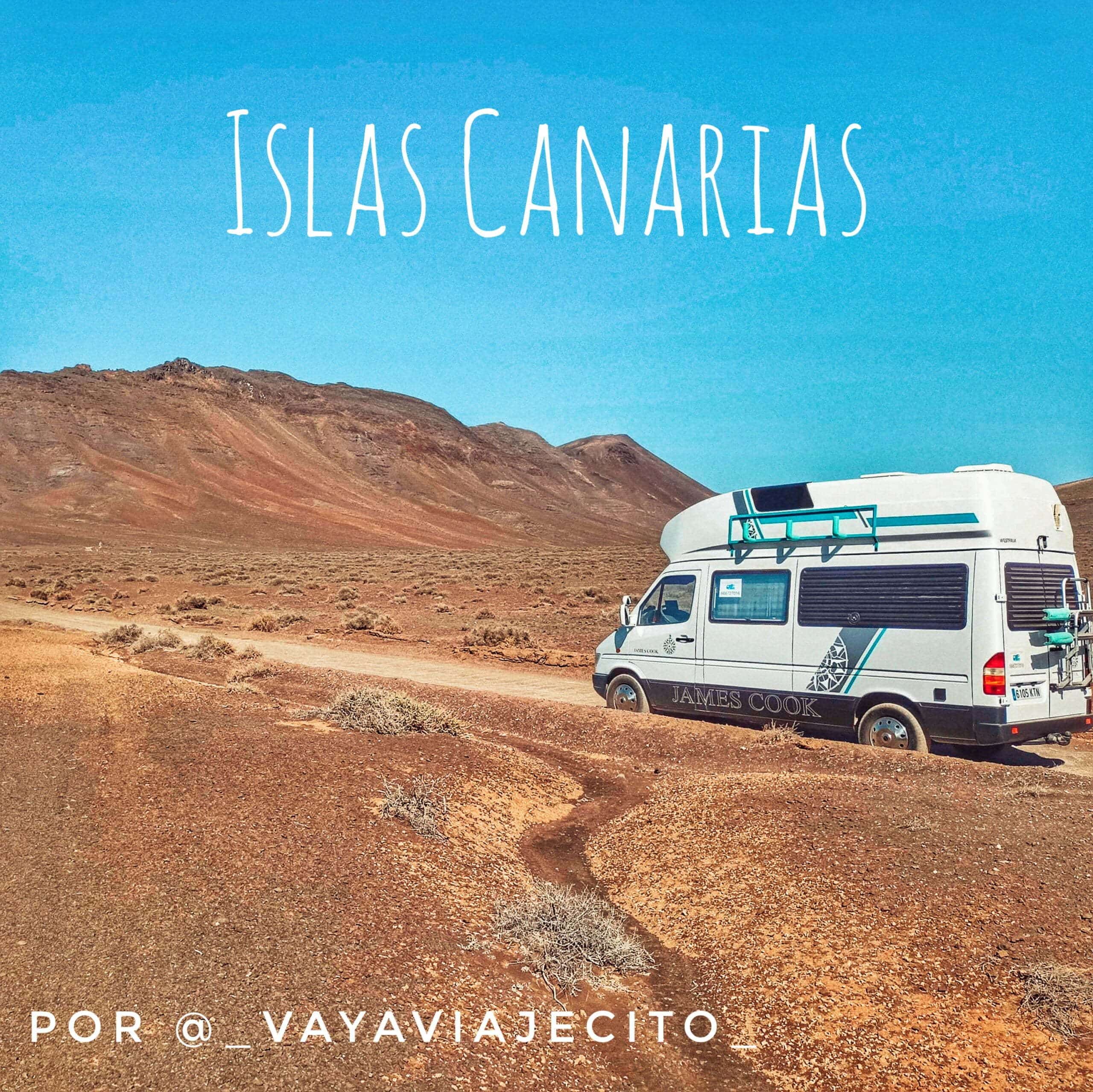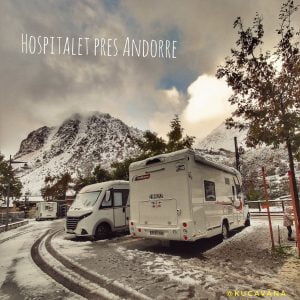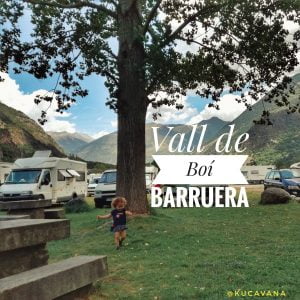Table of Contents
Discover a great trip through the Canary Islands in a motorhome through 4 of its islands.
If you don't have a motorhome or camper and you have to rent, a little gift before continuing:
Roadsurfer, camper rental professionals, has given us a gift for you! We do not charge any commission if you reserve a Roadsurfer camper, but in this case the discount they give you I think is very worth it for you, so we leave it here in case it helps you:
Road surfers you are going to deduct 80 euros in your camper rental if you reserve it through this link and enter the CODE: KUCAVANA80
Without a doubt, this family is one of our favorite instagramers and bloggers in family travel. Your posts on Instagram add value and help inspire us to plan and decide next routes.
They are a Valencian family made up of Marian, Raúl and their little one.
Vayaviajecito started in 2009 on their first backpacking trip to India and Nepal with friends, where when imagining the trip they were going to make, they always thought “what a little trip awaits us !!!!”.
Then other countries from Asia, Africa and America came, with friends and as a couple, until the youngest of the family arrived, with him they continued traveling. They love to discover the world with him, the near and the far. Traveling is a must for this family and they have many traveling dreams. But what they like the most about traveling is the time they spend as a family.
And while they are not traveling, they love to do hiking trails (which they have many on the C. Valenciana blog).
After renting AC and camper on several occasions, since December 2020 they move with their own camper. This way of traveling returns them to the backpacking life, the flexibility of not booking and planning.
Today they tell you all about their trips to the Canary Islands by motorhome and camper, a place they have traveled to several times and are all experts, do not miss it!
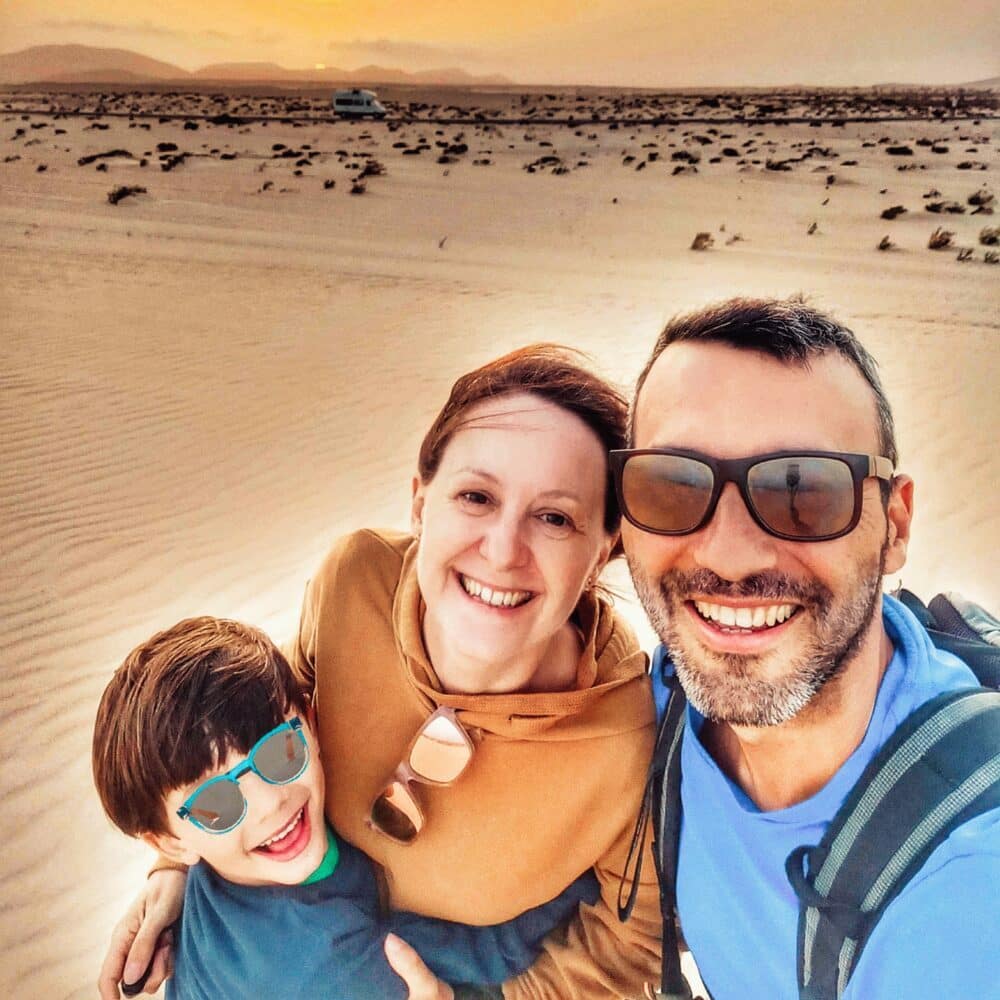
The Canary Islands by motorhome or camper
Our trips to the Canary Islands
La primera vez We went to the Canary Islands shortly after we met. We visit the Island of Tenerife and we rented a rather ramshackle car to move from one place to another. The truth is that the experience was very good, but on many occasions, if we liked the site, we were left wanting to squeeze a little more out of the dayWell, we had to go back to the hotel for the night.
A few years later we went to see the island of Lanzarote and we rebooked accommodation and hired a car to get around. Again we stumble over the same stone we didn't have the possibility to stay in one place if we liked it And every day, we spent more than two hours traveling.
In 2020, our third trip to the Canary Islands arrived. On this occasion, and as a family, we decided to visit 3 of the islands in a 21-day camper van trip. In this link, we show you the complete route.
La flexibility de not having to get up early to visit a site, can extend the day everything we wish and have a kitchen that allowed us to have lunch or dinner without fixed hours, it was just the plus we were looking for, and we have to say that it has been the best way to travel around the Fortunate Islands.
In this article we tell you why we believe that traveling around the Canary Islands in a Motorhome or Camper is a good idea, We present some practical tips to keep in mind and we cite the most interesting places to visit on each island.
Why travel to the Canary Islands by motorhome or camper?
The Canary Islands are a archipelago of eight islands and five islets, all of volcanic origin. Submit a subtropical climate, which makes it a destination for many tourists throughout the year, for something they are known as "the Fortunate Islands", although as we see, the climate varies locally depending on the altitude and the slope of the slopes, so it is advisable to always wear a jacket.
This varied climate gives rise to a great biodiversity, which together with its incredible geological and landscape richness, justifies that they have been declared 4 national parks, of which two of them are World Heritage Sites. Also all its islands are biosphere reserves of Unesco.
But regardless of the presence or not of national parks, each island is a treasure in itself. Till the date we have visited 4 islands and an islet, and none has left us indifferent.
In this article you we talked about the three islands we toured in Camper (Gran Canaria, Lanzarote and Fuerteventura):
Spruce Canaria
It is the second most populated island, and it shows in its landscape. Presents a important historical, cultural and artistic heritage. Visiting its highlands is one of the best things you can do, ascending Roque Nublo at sunset or spending a night under the stars is a great plan.
Lanzarote
It owes its name to the Genoese sailor Lanceloto Maocello. It is the third most populated island in the Canaries, after Tenerife and Gran Canaria. It presents as a great attraction the Timanfaya National Park. In addition, it has beautiful volcanic landscapes, where we can see wine-growing crops and some beaches of great beauty, such as Papagayo or Caleta de Famara, our favorite. From Lanzarote you can visit Graciosa Island.
Fuerteventura
The oldest in the archipelago, which has given rise to extensive plains as a result of the erosive process. With little population and wilder. Its landscapes will not leave you indifferent, with the Jandía Natural Park as a great reference and the impressive Dunes of Corralejo. From Fuerteventura you can visit the Lobos Islet.
Lobos Islet
An islet once a refuge for pirates and today parque natural. It is perfect to spend the day taking a tour and stopping to refresh yourself at one of its two best-known beaches, although we were more motivated by hiking inside. Must ask permission to Cabildo To visit the islet and, above all, sunscreen, water and if you plan to go to the beach, an umbrella is essential.
In summary, the Canary Islands will surprise you with the landscape, its gastronomy and its friendly people, and if, as we like to travel on your own, the Islands make it easy for you, since they present a excellent tourist infrastructure, with large number of accommodations for all pockets, great hotel sector, good communications, both on each island and between islands and a very wide car rental network.
Guide to travel to the Canary Islands by motorhome or camper
Prepare your trip to the Canary Islands by motorhome
When you have already decided that you want to visit the Canary Islands and you are clear about which Islands you want to visit, the first step is to compare by island, the prices of the flights and the rental of the campervan or motorhome, since it can vary considerably and once there , you will realize that moving from one island to another is very simple.
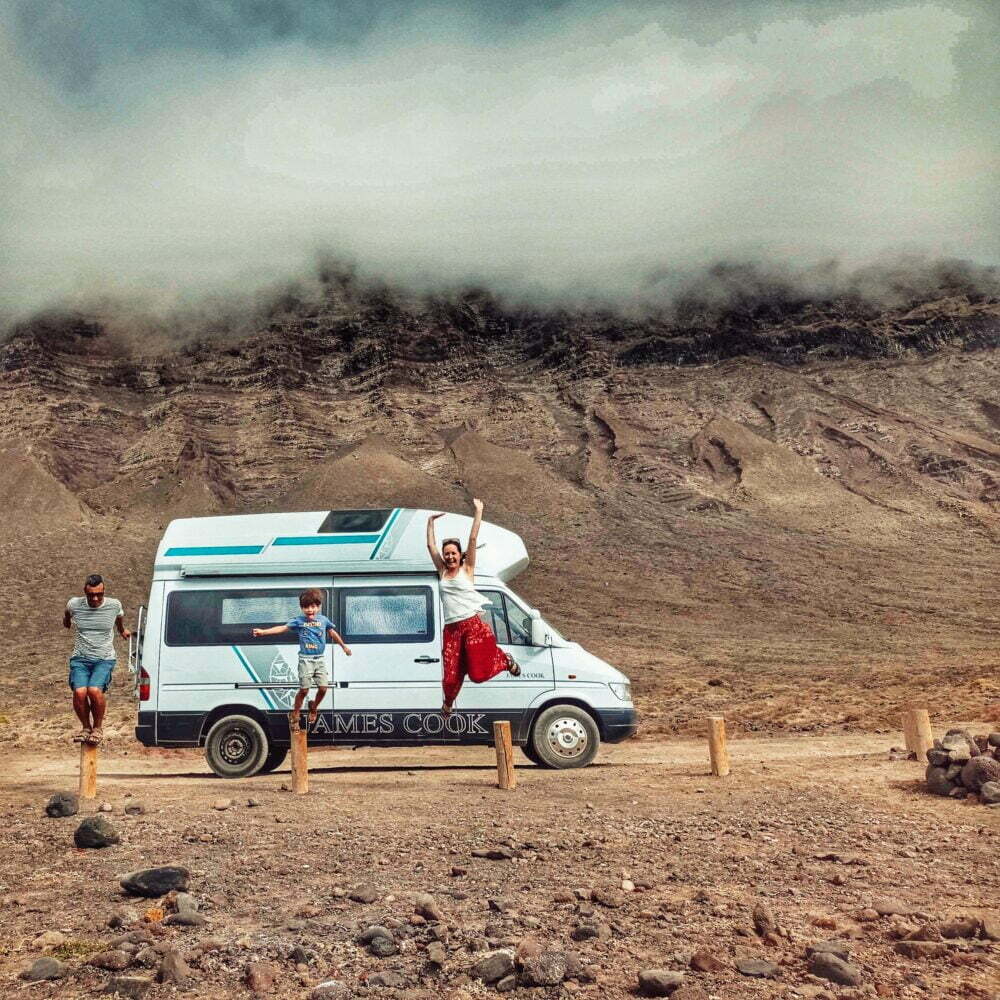
I rent or take my camper / AC
If you don't have a camper / AC there is only one option, the rent. We manage it from Valencia through Yescapa, which is a platform for renting motorhomes and camper vans between individuals, although you also have Campifly which is between individuals as well.
After our experience we believe that it is a platform to take into account due to the simplicity in its processing, the cheapest price and the services it offers. At this point it is important to consider what the rent does or does not include; insurance, bedding, dishes, etc.
However, if you already have a camper or AC, you can choose to move it from the peninsula. There are companies such as Baleària, Transmediterránea and Fred Olsen that offer the service, but you will have to assess the price of taking it, where the ferry departs from and the transport time. After a certain number of days it is an option to value. The output ports are Cadiz y Huelva and the trip usually lasts between 30 and 40 hours.
Canary Islands by motorhome or camper
We have to say that touring the Canary Islands with Camper has been very easy from the start. The day to day is simple, you trace the approximate routeyou have a little in mind dwhere do you want to spend the night and of course, if you want to try the Canarian gastronomyYou include in the stops a restaurant with good reviews or that has been recommended by a local.
In addition, traveling by camper or motorhome is associated make life more outside than inside, and it is precisely that particularity, together with the fact that after a certain time, all tourists return to their accommodation, which allows you to enjoy a unique place with the great treasure of the islands, its people, so who better Ask a local to recommend a nice place outside the typical route, or somewhere to have lunch or dinner.
Driving in the Canary Islands in a motorhome or camper
The Canary Islands generally have a good road and path network to get anywhere smoothly. After 21 days in the Islands, we can affirm that except the GC-210 in Gran Canaria, which ascends towards Cruz de Tejeda from Los Caserones and which is quite stressful with a large van or motorhome, it is not complicated at all to drive. There will simply be roads or paths that you will have to slow down. What we do guarantee is that many of its roads or paths they are an authentic wonder to enjoy the scenery.
Movement between the Canary Islands by motorhome or camper
Moving between the islands is simple, with great offer and flexibility of schedules.
Transmediterranea, Balearia, Fred Olsen and Armas offer this service and we only recommend planning a little in advance if there are holidays or weekends, since at the end of the day, we are going to transport a vehicle of about 6 meters.
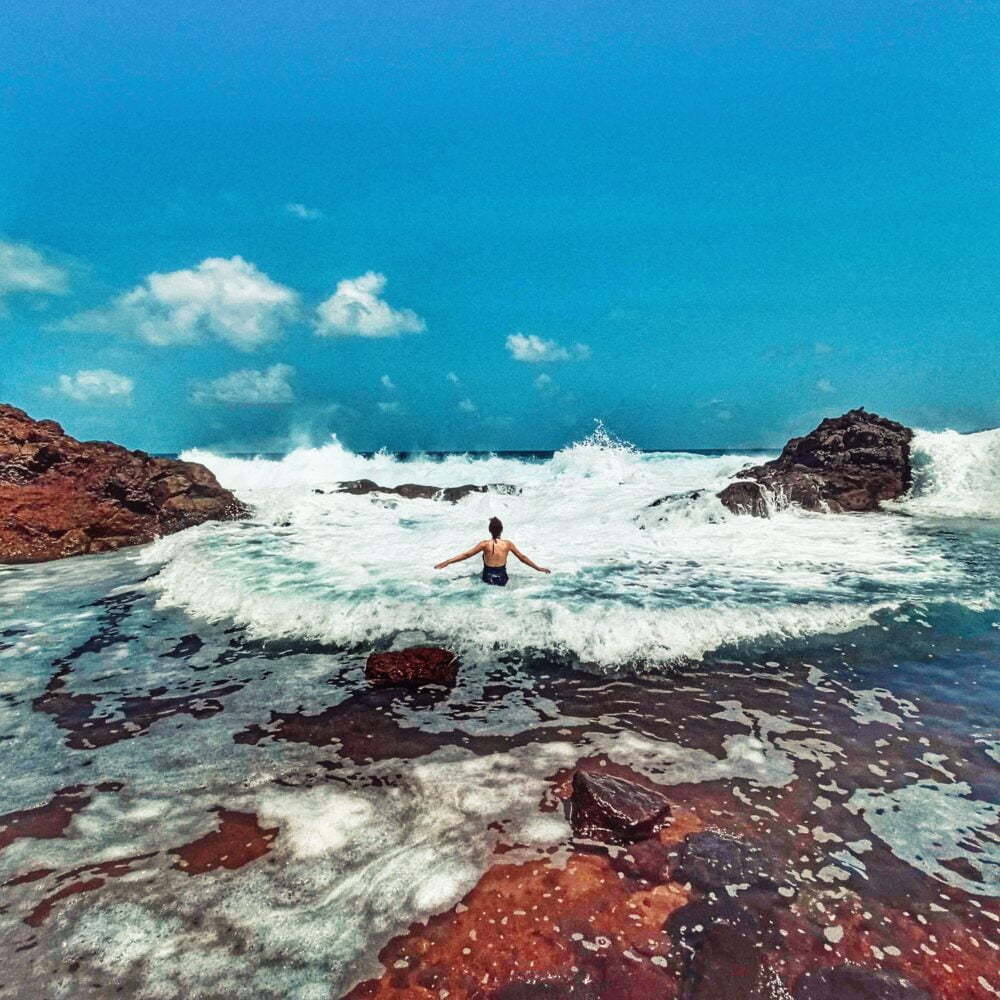
Park, spend the night and camp in the Canary Islands in a motorhome
For these 3 needs of any camper or motorhome utility, we made use of the application Park4night. We summarize what our feelings were.
To camp: remind you that all camping is prohibited anywhere in Spain if it is not a campsite or a private motorhome area. Therefore, you are not allowed to take a table, chairs, awning or any other item from your motorhome or camper on any of the Islands. Anyone who leaves the perimeter of the vehicle is considered to be camped and can be fined.
Overnight: The fact that the islands are not very big makes it much easier to find a place to sleep, since, if you don't like one, you can always change, although we also had to sleep in some other open space or town street (that's what who has to want to stretch the day too much ;-P).
Removing the natural Protected AreasWhere it is not allowed to stay overnightFinding a place to sleep was not a difficult task. As long as you are not camping you can park and spend the night in any place enabled to park vehicles.
To sleep in the highlands of Gran Canarias you have to ask permission to the Cabildo (sleeping under the stars is a real luxury) and doing it in the designated areas only. We were in the Corral de los Juncos Recreational Area.
Water services for motorhomes and campers
Application Park4night it also makes this management easier for us. We did the emptying of black and gray waters in the three islands that we visited (Lanzarote, Fuerteventura and Gran Canaria). mainly at gas stations and some camping sites.
There are some places like the gas station BP of the Doctoral in Gran Canarias, and the Corralejo BP in Fuerteventura which are a real wonder, but it was also not difficult for us to find water drainage and filling points for very cheap prices or for free.
To keep in mind: We recommend making a map locating on each island some places to change the waters, that way, you will travel more relaxed and if you know that you are going to be a couple of nights somewhere without service and with the waters half full, you make sure to empty or fill before leaving. Neither does it hurt to combine emptying and filling water with showering.
Finally, you should know that in the Canary Islands, it is difficult to find municipal motorhome areas, as we can find in the peninsula.
You can expand the information in the following link.
Travel Days & Routes
We believe no less than 7 days to visit each island is a good starting point, which allows you, with a little common sense, to go through it without haste. A good idea is decide what places you want to visit yes or yes, and go mounting the trip according to those visits that you consider important. We propose the places that we consider to be the most recommended by islands:
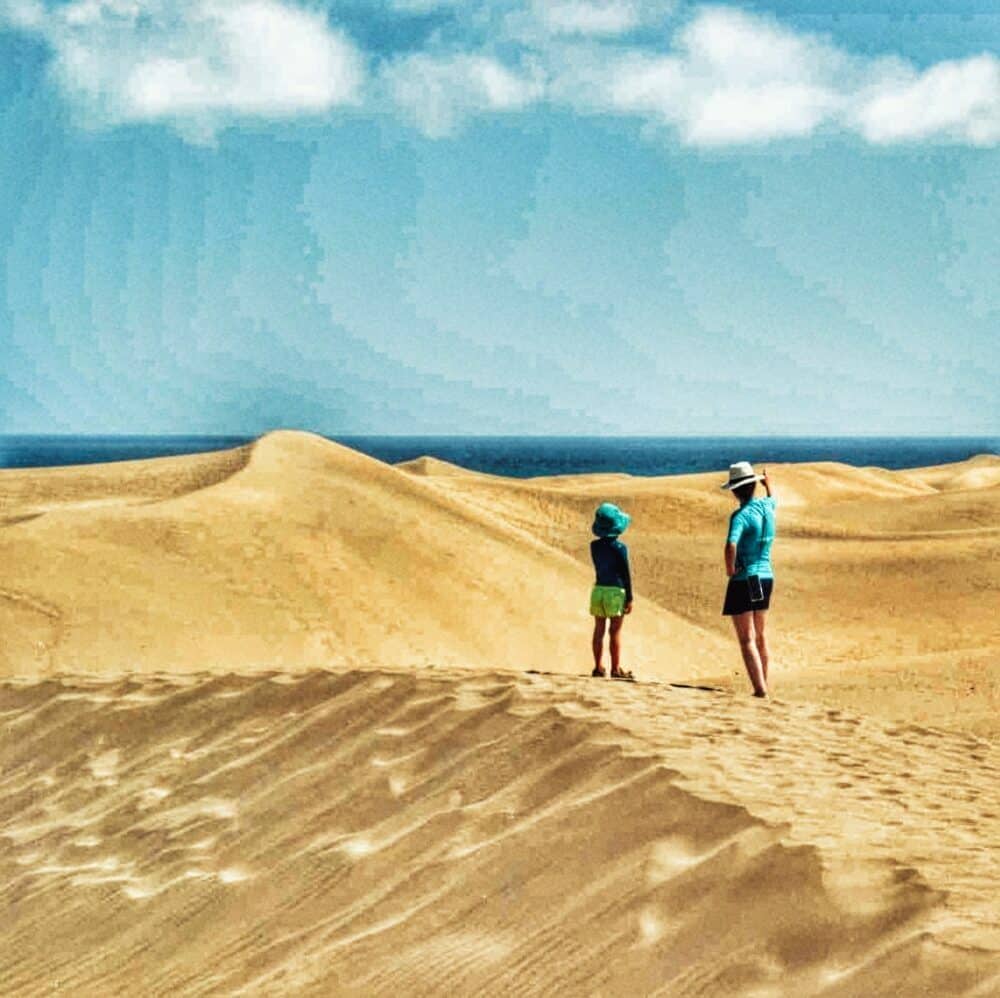
Visiting Lanzarote is how to visit another planet, volcanic island of great beauty with the unmistakable footprint of Cesar Manrique.
Some of the most important places are:
- El Timanfaya National Park: Result of the violent eruptions that took place in the XNUMXth century. It's like visiting Mars.
- Caleta de Famara beach: Beach that begins in the town and extends for several kilometers to the slopes of the spectacular Risco. Our favorite.
- La Geria: Area of great scenic and cultural value, famous for the planting of vines in a volcanic environment for the production of wine.
- The Jameos del Agua : Volcanic tube modeled by Cesar Manrique.
- Cueva de los Verdes: Grotto formed by the eruptive activity of the Corona volcano, a marvel that you cannot miss.
- La Papagayo Beach: Place where you can enjoy one of the most desired baths in Lanzarote in a unique landscape.
- El Charco de los Clicos: Near the town El Golfo. A phenomenon of nature formed by a greenish lagoon surrounded by black sand.
- All the Janubio Salt Flats: Nice landscape formed by salt flats in production.
- The breathtaking views of the River viewpoint.
Fuerteventura awaits you with arid and winding roads, dunes of great beauty that reach infinity and a wild landscape.
Some of the most important places are:
- All the Dunes of Corralejo: The small desert of Fuerteventura, declared a natural park in 1982. Natural space of white sands with long beaches with turquoise waters. It is a spectacle of nature and a good place to make the croquette.
- Walk the north coast stopping at its beaches or coves: Route that we recommend doing without haste, stopping at the innumerable coves that appear to us, with the unrepeatable and curious Pop corn beach.
- Sotavento Beach: One of the most visited enclaves, its large stretches of sandy areas together with the turquoise water of its sea. It is an idyllic place for practicing water sports and it is not difficult to find companies that offer courses.
- Betancuria: Former capital of Fuerteventura. It is a beautiful town located inland on the west coast of the island of Fuerteventura.
- Jandía Peninsula: Natural space that will leave you speechless. They say it has the best beaches on the island and possibly the Canarian archipelago. It is a practically virgin natural space with a great variety of landscapes. The easy thing is to arrive, the difficult thing is to leave.
- Caves of Ajuy: One of the main tourist attractions on the island. If you like caves and seascapes, be sure to visit them.
- And of course the Cofete beach: On the Jandía peninsula, you will find the great treasure of Fuerteventura, the Cofete beach. Incredible sandy area of more than 12 kilometers long with the ridges of the Jandia Natural Park protecting it.
Former lair of pirates and corsairs. The best way to get there is through a ferry that departs from Corralejo.
The place is worth visiting without haste and taking a refreshing swim on its beaches. Don't forget the sunscreen and water.
In Gran Canarias we will visit towns again and enjoy the gastronomy.
Some of the most important places are:
- Sleep in the Confital beach, with all the hustle and bustle of the people of the capital.
- The popular viewpoint of Cruz de Tejeda and the town of Tejeda: Geographic center of Gran Canaria, with lively restaurants and bars, as well as souvenir shops. The town of Tejeda is settled on the slopes of a crater.
- Visit The Roque Nublo at sunset: Natural Monument and emblematic place on the island. The rock rises 80 meters above its base and it is not difficult to understand why the aborigines used it as a place of worship. The sunset excursion is the best plan you can do.
- Guayadeque ravine: Ravine that separates the municipalities of Ingenio and Agüimes. It stands out for the cave houses that are located in its territory.
Without forget:
- Maspalomas Dunes: Natural Area formed by a set of dunes of great beauty and height. This mixture of desert presents beautiful and well-known beaches in this area of the island. We enjoyed Playa del Inglés and we toured the dunes from top to bottom. We recommend dining at the Romantic Park Restaurant.
- Teror: Village of great beauty and place of pilgrimage for the inhabitants of Gran Canaria as it houses the Basilica of the Virgen del Pino.
- Agaete: One of the most beautiful towns in Gran Canaria. The houses with a patio from the XNUMXth century and the beauty of the white houses of its historic center stand out.
- Visit some of their Puddles or natural pools. If you want to disconnect, be sure to visit the island's many natural pools, such as the one in Roque Prieto, in the north of Gran Canaria. Although you will always have to be attentive to the open sea.
And up to here, the notes of a trip in Motorhome or Camper around the Canary Islands. We hope this post helps you discover that this type of travel is perfect for visiting the Fortunate Islands.
